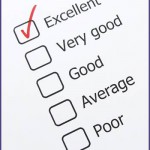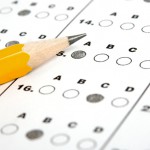 Research: Evidence has grown over the last century to show that traditional grading practices are subjective, ineffective, and often irrational. Time and time again studies demonstrate that when grades are used as punishment or to give students a “reality check,” the focus moves away from student learning and engagement plummets. Best grading practices include accurate, specific, and timely feedback that provide students opportunities for growth rather than marking them failures, and result in higher student performance, fewer disciplinary actions, and improved engagement and morale.
Research: Evidence has grown over the last century to show that traditional grading practices are subjective, ineffective, and often irrational. Time and time again studies demonstrate that when grades are used as punishment or to give students a “reality check,” the focus moves away from student learning and engagement plummets. Best grading practices include accurate, specific, and timely feedback that provide students opportunities for growth rather than marking them failures, and result in higher student performance, fewer disciplinary actions, and improved engagement and morale.Time to Get Rid of the Traditional Grading Scale
 Research: Evidence has grown over the last century to show that traditional grading practices are subjective, ineffective, and often irrational. Time and time again studies demonstrate that when grades are used as punishment or to give students a “reality check,” the focus moves away from student learning and engagement plummets. Best grading practices include accurate, specific, and timely feedback that provide students opportunities for growth rather than marking them failures, and result in higher student performance, fewer disciplinary actions, and improved engagement and morale.
Research: Evidence has grown over the last century to show that traditional grading practices are subjective, ineffective, and often irrational. Time and time again studies demonstrate that when grades are used as punishment or to give students a “reality check,” the focus moves away from student learning and engagement plummets. Best grading practices include accurate, specific, and timely feedback that provide students opportunities for growth rather than marking them failures, and result in higher student performance, fewer disciplinary actions, and improved engagement and morale. Research: Traditional classrooms depend largely on testing to gauge student learning and achievement. Teachers present a lesson to a large group of students and use tests or quizzes to determine whether or not it stuck. Termed “summative” testing, this practice gives answers to what a student knows or doesn’t know at a particular moment in time. Researcher
Research: Traditional classrooms depend largely on testing to gauge student learning and achievement. Teachers present a lesson to a large group of students and use tests or quizzes to determine whether or not it stuck. Termed “summative” testing, this practice gives answers to what a student knows or doesn’t know at a particular moment in time. Researcher 

